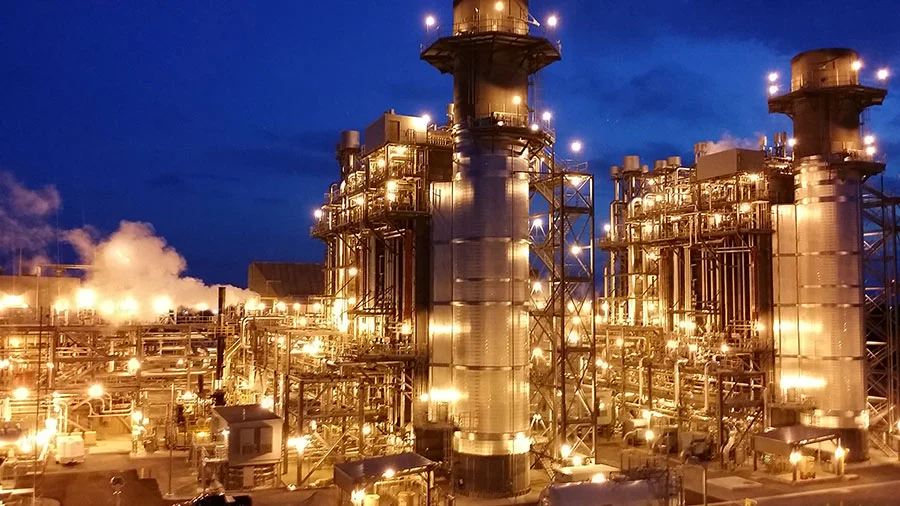The selection of utilization and distribution voltage levels is one of the most important considerations in power system design. System voltages usually affect the economics of equipment selection and plant expansion more than any other single factor. It behooves the power system engineer to consider carefully the problem when designing the distribution system.
Voltage Classes
The various voltage levels may be broadly classified as follows:
ANSI C84.1-2011 Electric Power Systems and Equipment — Voltage Ratings (60 Hertz)
3 System voltage classes
3.1 Low Voltage (LV): A class of nominal system voltages 1000 volts or less.
3.2 Medium Voltage (MV): A class of nominal system voltages greater than 1000 volts and less than 100 kV.
3.3 High Voltage (HV): A class of nominal system voltages equal to or greater than 100 kV and equal to or less than 230 kV.
3.4 Extra-High Voltage (EHV): A class of nominal system voltages greater than 230 kV but less than 1000 kV.
3.5 Ultra-High Voltage (UHV): A class of nominal system voltages equal to or greater than 1000 kV.
The low-voltage class, is normally restricted to supplying utilization equipment directly. The medium-voltage class (commonly 2.4, 4.16, 6.9, and 13.8 kV) is used most frequently for distribution purposes but occasionally is employed as a utilization voltage, particularly for motors rated 2.3, 4.0, 6.6 or 13.2 kV. The high-voltage class may occasionally be encountered as the utility supply voltage in a large plant, with widely dispersed load areas.
Factors Affecting Voltage Selection
The factors affecting system voltage selection are:
- Service voltages available from utility
- Load magnitude
- Distance power is to be carried
- Rating of utilization devices
- Safety
- Codes and standards
The relative effect of these factors varies widely depending upon the particular plant involved. In general, however, the following will apply:
- 1. Service Voltages Available From Utility
- The best distribution voltage to use within a plant may not be one of the service voltages available from the utility at the plant site. When this situation arises, the system design engineer must determine the relative costs of using the service voltage, for distribution or providing sufficient substation transformer capacity to obtain the desired distribution voltage. In some cases, the necessary substation investment will prove uneconomical and one of the available service voltages will be used.
- 2. Load Magnitude
- Load magnitude has little if any bearing on selection of voltages in the 600-volt class but is an important factor in selecting distribution voltages. It is usually the determining factor for selecting dis- tribution voltages when the plant is compact and where the load is concentrated in one area. The utilization equipment voltage ratings and voltage limitations are almost the entire governing factor.
- 3. Distance Power Is to Be Carried
- Distance does not usually affect selection of voltages in the low voltage class but is an important consideration in the selection of distribution voltages. It is particularly important when sizable loads are located at quite a distance from the main plant. A good example for this is the distribution voltage in a mine site
- 4. Rating of Utilization Devices
- Utilization devices have a major effect on the selection of voltages in industrial plants. Lighting, small fractional horsepower motors, hand tools, business machines, appliances, etc. are generally available with 240-volt ratings. Where this type of equipment is used, 240-volts single-phase must be available.
Three-phase motors are readily available for voltages from 240 to 13,200 volts. However, the most desirable voltage for a given motor from both a design and system cost standpoint varies with the horsepower rating.
The kW/horsepower ratings of three-phase motors definitely affect system voltage selection in both the low-voltage and medium-voltage classes. Other types of utilization equipment affect the selection of system voltages. For example, approximately 75 percent of furnaces using resistance elements are designed for 240 volts, with 480 volts generally maximum. Large arc-furnace transformers are generally limited to a maximum of 23 to 34.5 kV because of switching equipment limitations. This illustrates how utilization equipment other than lighting and rotating machinery can affect system voltage selection.
- 5. Safety
- Safety is a major factor in selecting system voltage in the area of 120 volts, or below, where appli- ances and portable tools are used. For example, where there is a possibility of contact with energized parts such | as in ungrounded frame portable tools, voltages of the order of 32 volts have been selected because it has been” shown that voltages above 50 volts to ground. can be : lethal. This practice, in general, conforms to National Electrical ‘Code. The groundirig of all portable tools - is recommend
On circuits above 120 volts, there seems to be little concrete evidence that voltage selection from a safety standpoint is a major consideration. While the chances of electrocution do, to a certain extent, increase with an increase in voltage, these higher ratings can all electrocute a person if he contacts a live part under proper conditions. For the highest order of safety on circuits 50 volts and higher, work on current-carrying parts should be done only with the circuit de-energized.
- 6. Codes and Standards
- Local codes such as the PEC and NEC places limitations on the voltage ratings of equipment and distribution circuits within buildings and should be consulted to assure conformance.
